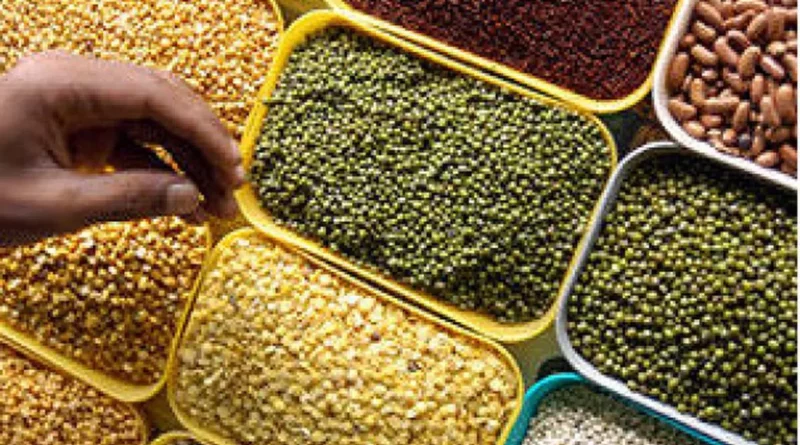Skewed rain distribution hits sowing of paddy, pulses
By Sandip Das
Regional imbalance in monsoon distribution continues to hit paddy and pulses sowing despite narrowing of the deficit in sowing of kharif crops.
According to agriculture ministry data, 59.8 million hectare (MH) has been covered under the kharif crops till Tuesday, a decline of only 1.61% on year.
Ministry officials said the total area sown till now is around 54% of normal kharif sown area of 109 MH.
According to the India Meteorological Department (IMD), 63% of the 717 districts in the country have so far received normal or excess rainfall.
Rest of the 263 districts have received deficient and scanty rainfall.
A chunk of area in key pulses and paddy growing regions in Maharashtra (-17%), Karnataka (-26%), West Bengal (-13%), Jharkhand (-42%), Odisha (-16%), Bihar (-36%) have been rain deprived despite overall rainfall is on par with normal benchmark – long period average (LPA) as on Tuesday.
“Rice, maize and pulses continue to be areas of concern in terms of area under cultivation,” Madan Sabnavis, chief economist of Bank of Baroda, said.
He said El Nino is likely to affect the country somewhere in the middle of monsoon season and “hence the next 30 days or so will be critical”.
Deficiency in paddy transplantation has declined to 6.3% from 23.9% 10 days back.
The sowing of pulses – tur, urad and moong-have declined by 13.28% on year.
“The sowing of pulses has to catch up in the next couple of weeks, which is currently below the last year level,” Parag Gadre, board adviser to India pulses and grains association, told FE.
While sugarcane planting is up by 4.7% on year, while area under coarse cereals such as maize, bajra and ragi was up 18.1%.
The sowing of cotton, a cash crop, is still deficient by 11% on year.
According to the met department, overall monsoon rains since its onset over Kerala coast on June 8 have been on par with the benchmark long period average (LPA) on Tuesday. Rainfall in the southern peninsula and east and north-east regions have been 20% and 22% below the LPA so far.
However, north-west India and central India regions have received 41% and 5% more rainfall than the LPA, respectively.
The met department on Tuesday predicted increase in rainfall activity over Konkan, Goa, Madhya Maharashtra, Gujarat, Chhattisgarh, Vidarbha, Telangana and Odisha over the next three to five days.
The rainfall activity is likely to be subdued over northeast and adjoining east India and over plains of northwest India except east Rajasthan during next.
The IMD on June 30 predicted ‘normal’ rainfall for the month of July, when around 40% of the monsoon precipitation typically occurs.
India as a whole received “below normal” rainfall of 148.6 millimeter (mm) in June, against the LPA of 165.3 mm, a deficit of 10%.
This article has been republished from The Financial Express

